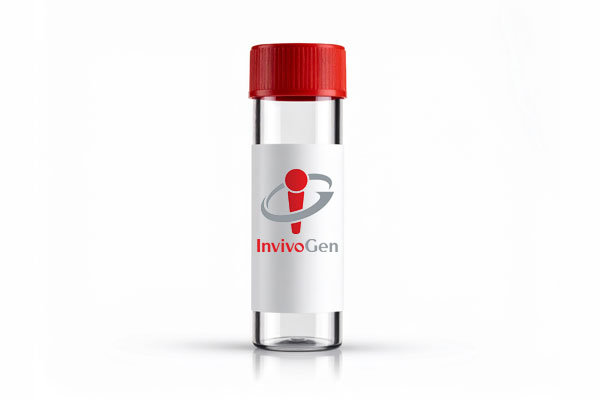
pNiFty3-A-Lucia
-
Cat.code:
pnf3-lc3
- Documents
ABOUT
pNiFty3-A-Lucia plasmid is composed of three key elements:the mouse interferon beta minimal promoter, five AP-1 transcription factor binding sites and a secreted luciferase (Lucia) reporter gene.
- The AP-1 transcription factor binding site: Activator protein 1 (AP-1) is a transcription factor activated by most PRRs. AP-1 is a heterodimeric complex composed of members of Fos, Jun and ATF protein families. AP-1 binds to the TPA responsive element (TRE: TGAG/CTCA)1. AP-1 activation in TLR signaling is mostly mediated by MAP kinases such as c-Jun N-terminal kinase (JNK), p38 and extracellular signal regulated kinase (ERK).
- IFN-β promoter: the mouse IFN-β minimal promoter comprises several positive regulatory domains that bind different cooperating transcription factors such as NF-kB, IRF3 and IRF72.
pNiFty3-A-Lucia plasmid is selectable with Zeocin™ in both E. coli and mammalian cells, and can be used to generate stable clones.
All products are for research use only, and not for human or veterinary use.
SPECIFICATIONS
Specifications
In vitro transfection
Plasmid construct is confirmed by restriction analysis and full-length open reading frame (ORF) sequencing.
CONTENTS
Contents
-
Product:pNiFty3-A-Lucia
-
Cat code:pnf3-lc3
-
Quantity:20 µg
1 ml of Zeocin® (100 mg/ml)
Shipping & Storage
- Shipping method: Room temperature
- Upon receipt, store product at -20 °C
- Avoid repeated freeze-thaw cycles
Storage:
Caution:
DOCUMENTS
Documents
Technical Data Sheet
Plasmid Sequence
Safety Data Sheet
Certificate of analysis
Need a CoA ?


